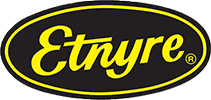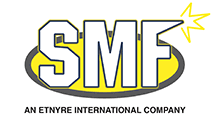Passive Water Intake Screens vs Traveling Screens
Review of Technologies, Capabilities and 316(b)

EPA Background
In May of 2014, the EPA issued a final rule under Section 316(b) of the Clean Water Act that regulates cooling water intake structures. The regulation was created to protect endangered fish, shellfish and other marine life organisms from being killed by the withdrawal of water during the cooling process.
An estimated 1,065 facilities have been affected by the ruling--causing the cooling tower industry to review options for compliance. The EPA offers different options for conformity, from flow reduction methods to fish behavioral technologies. Of the 316(b) compliance options provided, screening technologies are recognized by the EPA as Best Technology Available (BTA) and is the most employed technology used.
Screen Technologies
Intake screens are not new to the cooling tower industry or municipalities. For over 75 years, the industries have used them, mainly to prevent debris from clogging down-stream equipment—a very costly problem. While fish impingement and entrapment were always a benefit of intake screens, the 316(b) regulation now brings it to the forefront.
Although there are several different types of water intake screen technologies, traveling screens and wedge wire passive water intake screens are commonly specified as a 316(b) solution. Hence, the remainder of this article will focus on these two technologies.
Ultimately, it’s good to understand the basic principles and benefits of each type of system. There are some similarities as well as key differences between the two technologies that should be considered when choosing the appropriate screening system. However, be aware that options can be constrained by site conditions, limiting the choice of one system or the other due to the specific site requirements.
Similarities
- Both technologies meet the EPA’s 316(b) compliance standards
- Both have screen velocities of 0.5ft/sec or less
- Both protect aquatic life
- Both do an excellent job of preventing water borne debris from clogging downstream equipment
- Both offer different types of screens, customizable to the environmental needs
- Both can be adapted to the water conditions where the system is installed: salt, brackish or fresh, and icy water
Given these similarities, both systems provide solid reasoning for power plants, manufacturing facilities and municipalities to adopt either technology in order to comply with 316(b).
By looking at the differences however, additional criteria is made available that can impact the decision making process.
Differences
Traveling Intake Screens
Product Description: Continuously moving mesh screen that removes debris and fish are carried to the head section of the unit. Fish are gently discharged back to their environment. Debris continues to travel to a pressure wash system where it’s collected for further disposal.
- Smaller footprint
- Existing installations can be retro-fitted as needs change
- The screen is self-cleaning
- Removes debris from waterbody, requiring additional processing to manage debris
- Requires periodic removal for off-site manual cleaning and maintenance
- Often, screen is made of steel which is highly corrosive over time.
- Screen life is limited due to uneven wear from basket chains mis-tracking
- Impingement survival varies by life stage
Wedge Wire Passive Intake Screens
Product Description: A non-moving screen that harnesses hydrodynamics and physical exclusion to stop debris and fish from entering the cooling system.
- Most effective type of screen to minimize impingement and entrainment, including the protection of early larvae-size fish
- Lower operating costs over time since there are no moving parts to the system
- No Need for a Power Supply – a passive system does not require any power to operate it. However, if an airburst system is added, electricity is required to run it.
- Installation Flexibility – Can be installed offshore or near the power station
- More prone to biofouling. When biofouling is a concern, a copper-nickel system or anti-biofouling coatings are available
- If maintenance is required, it can be more challenging since the unit is completely submerged. However, when installed on a bulkhead structure, they can be removed for maintenance.
- Requires a sweep velocity to work efficiently
- Helps clean the screen naturally
- In high debris or low current environments, back-flushing via compressed air may be required
- Prevents debris from entering the intake system, but does not remove the debris from the waterbody
- In high debris environments requires a backwash system
- Larger amounts of water withdrawal can be accommodated by using multiple units
- When installed off-shore, requires installation by barge and divers, restricting access to the area during construction.
- When boats or other structures are present, the intake system must be installed deep enough to avoid direct contact with other objects
Bottom Line
Complying with 316(b) does have options. After careful consideration of each type of screen with their operation requirements and capabilities, determining the right system becomes clearer. If a wedge wire passive intake screen is a viable option for you, let Hendrick offer budgetary pricing and help you learn more.









